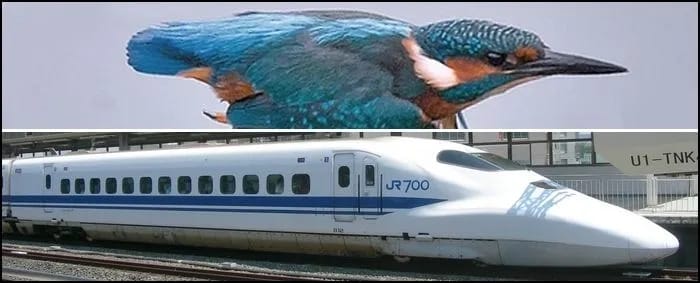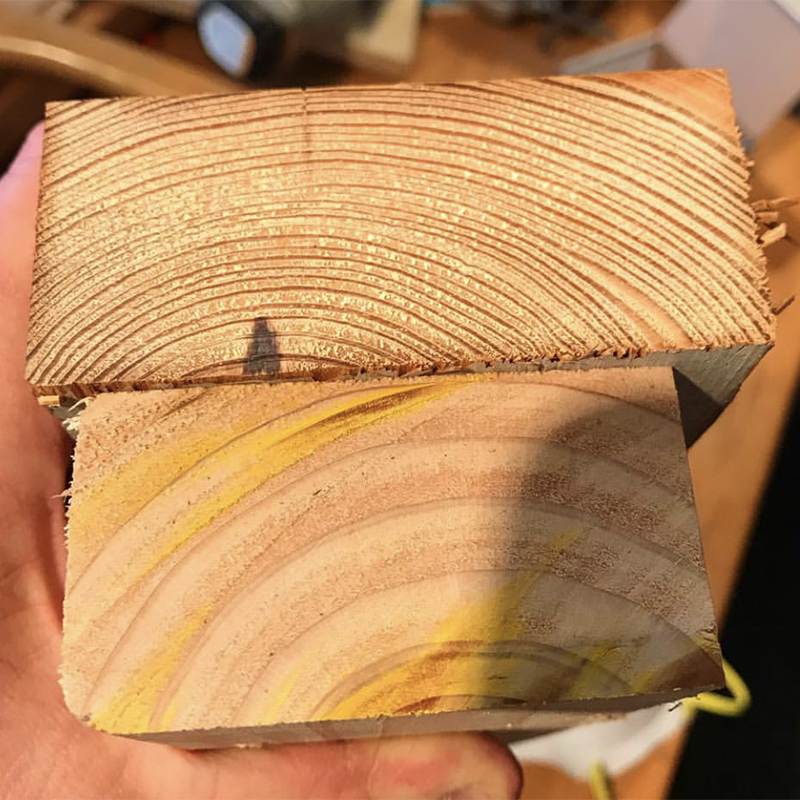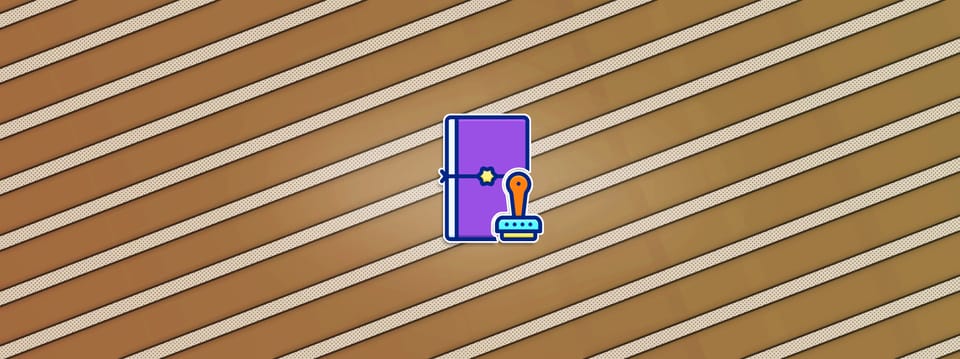Improving Your Leadership Skills Through Biomimicry
7 tips inspired by nature for becoming a better leader…

7 tips inspired by nature for becoming a better leader…
Biomimicry
Biomimicry is the practice of imitating nature and natural systems, and using nature-inspired strategies to improve our human designs, systems, models, and processes.
It involves observing and studying nature's problem-solving patterns, and using them to overcome complex human challenges.
In this article, we’ll explore how we can learn from nature’s designs and behaviours, and use biomimicry to become better leaders.
First, let’s look at a practical example of biomimicry, inspired by a particularly well-adapted hunter:
The Kingfisher
Like its name suggests, the Kingfisher specialises in catching fish.
– (Or, to be more precise, some species of Kingfisher specialise in catching fish).
Their long, narrow, and pointed bills make them excellent hunters in shallow bodies of water, such as rivers or canals.
Taking advantage of their streamlined shape, the Kingfishers slice through the air as they dive down towards the water from above. And, when piercing through the surface, they barely make a splash. With considerable momentum from the dive, they swiftly glide down below to catch their underwater prey.
All in one smooth, continuous motion; silent and quick – a lethal combination for a hunter.
Keep the Kingfisher in mind, and let’s make a leap back in time to the late 1990s, and visit Japan.
At the time, the West Japan Railway Corporation was faced with a problem regarding its famous high-speed railway lines, the Shinkansen bullet trains:
The Shinkansen were able to reach very high speeds, but, due to their blunt nose design, air would build up in front of the trains when passing through tunnels.
The compressed air produced sound waves – shooting off ahead of the train – which made a loud boom as they rapidly dispersed upon exiting the tunnel. This often happened in dense residential areas, disturbing people living nearby. But the thunderous noise pollution also affected any area across the country where the train passed through tunnels, disrupting wildlife and even impacting passengers on the train.
Reducing the speed of the train to stop the loud tunnel booms would defeat the purpose of a high-speed railway, and so the Shinkansen engineering team had to adapt and look for other solutions.
Luckily, chief engineer Eiji Nakatsu was an avid bird watcher. He had noticed that the Kingfisher elegantly manoeuvres pressure differences – as it travels from one medium (air) to another (water) silently and quickly to catch its prey.
When testing different nose designs, the engineering team discovered that the streamlined shape of the Kingfisher’s bill – a design suggested by Nakatsu – was incredibly aerodynamic and well-adapted to alleviate air pressure buildup in enclosed spaces.
– Like in a tunnel.
Instead of pushing air in front of the train, the Kingfisher-inspired nose cut through it, allowing the air to flow past.
And so, based on their findings, the team modelled the nose of the Shinkansen to mimic the shape of the Kingfisher’s bill.

The Kingfisher and the Shinkansen bullet train.
As a result, they successfully put an end to the loud tunnel booms, permitting them to operate the trains at high speeds through residential districts. But that wasn’t all:
The new, aerodynamic nose design also allowed the trains to travel faster, consume less power while maintaining high speeds, and produce less noise overall during travel, increasing passenger comfort.
By mimicking nature, Nakatsu and his engineers were able to solve a complex problem, and found even further benefits from doing so. And there are many such examples of human design improvements inspired by nature.
There is a lot we can learn from nature. Because evolution has had the benefit of millions of years of successive improvement via natural selection to optimise its designs. And, through biomimicry, we can take advantage of all of this accumulated trial and error.
Once you start thinking this way, you can also apply biomimicry in ways other than to guide design choices. As stated earlier, you can use it to improve your leadership skills. Let’s take a closer look at how you can do just that.
– It’s all about drawing analogies.
The Shinkansen-Kingfisher story already touched on a couple of important points for being a good leader:
01: Adapt To The Task
Like the Kingfisher and the Shinkansen, as a leader you have to adapt to the challenges you’re facing.
Asking a parrot, with its curved beak and large body, to catch fish by diving into the water from above might not be the best idea. The poor bird would probably fail, simply because it’s not as well-adapted to the task as the Kingfisher.
It would more than likely just cause a big splash and scare the fish away. Just like how the blunt nose of the original Shinkansen caused the tunnel booms, disturbing everyone with noise pollution.
So, when something isn’t working, ask yourself: how can you change your approach to fit the needs of the project or the task?
You might potentially have to make some compromises, but not necessarily! Because, with some luck, you may just be able to come up with an ingenious idea and solve the problem outright.
The Shinkansen engineers didn’t reduce the speed of the train, which would have been an easy solution (but bad for the railway service). Instead, they found a way to avoid the tunnel boom while maintaining high speeds.
They adapted to the requirements of the task.
Similarly, if you’re struggling with a problem, try guiding your team in attacking it from different angles. Be creative, test different designs and methods, and/or look to nature for inspiration.
Once, when developing the look for a visual effect on an undisclosed project – where the client didn’t have a clear idea of what they wanted – we had several artists work simultaneously on the same effect, coming up with multiple varied designs.
That way, we could initially present the client with a broad variety of options, and hone in on what they liked and disliked.
In this particular case, adapting to a shotgun approach helped us reach the preferred design faster than by letting a lone sniper aimlessly try to hit an undefined target. In other cases, the target may very well be crystal clear, and it would be better to send in your best shooter.
It all depends on the challenge you’re presented with, and you just have to adapt accordingly.
Adapting also means not giving up, but finding a different way to your goal when something goes wrong. Try to act like a GPS navigation system, in a sense: if you miss a turn, reroute and find a different path forward. (Which might even mean doing a U-turn to get back on track).
Or, in the spirit of this article – using nature as an example – try to act like ants: when an obstacle blocks a path, ants will quickly find an alternative route or work together to move the barrier.
02: Alleviate Pressure Buildup
The success of the Kingfisher’s hunting strategy and the Shinkansen’s high speed tunnel traversal both rely on dealing with pressure in an effective way.
And, as a leader, managing pressure in your team is crucial for sustaining good morale.
Where is pressure building up? How can you streamline systems and processes (especially daily ones) so that issues don’t grow and fester?
Could you for example make a tool or a template that automates a tedious task which everybody hates doing, or where it’s easy to make mistakes?
Try to remove as many annoying and time consuming obstacles as possible, and facilitate the work of your team members. By regularly assessing how you can make life easier for your team, and then acting on your findings, unwanted pressure won’t build up as easily.
And when you’re not ‘pushing heavy air’ in front of you, life becomes easier for you as well.
Here’s for example one issue we fixed to avoid further frustration:
When sharing shot work between vendors, you may have to package up and send Nuke scripts containing your composite to another vendor.
A Nuke script can be referencing dozens or even hundreds of external files, and hunting them all down can be a real pain. – For several reasons:
The Comp Info option in Nuke’s File menu doesn’t list the file paths to Deep files, geometry, or files within Groups, for example. And it doesn’t provide a complete file path including the actual file name – just the folder it’s in.
Furthermore, compositors will often leave a bunch of files in the Nuke script that aren’t actually used in the composite, like old versions, references, or alternative elements for testing.
Which means, there was a lot of manual work required from us to ensure that all the correct files were being sent. And it was easy to make mistakes and miss some files or send redundant ones.
So instead, we made a tool that scans Nuke scripts for upstream dependencies and packages up all of the necessary files automatically. Which meant, we could focus more on what we do best, like creative tasks, and let the computer handle what it does best.
A weight off our shoulders – and pressure released from the team.
Alleviating pressure also applies to yourself as a leader.
You can’t (and shouldn’t have to) deal with everything yourself. Avoid becoming overwhelmed, as it will hurt both you and your team. To do that, make sure to delegate suitable tasks.
Delegate, delegate, delegate. If you don’t, you’ll very quickly end up with an enormous amount of work on your plate, easily 2-3 people’s worth. And that’s a sure fire way to burn out.
In the past, I’ve worked months and months of consecutive weekends and late nights throughout the week. It’s not healthy. Learn from my mistakes, and delegate.
Remember that work often comes in waves, so give yourself a buffer, as well. Don’t completely pack your schedule, because you may suddenly be called to ‘fight a fire’ somewhere else. And if things do end up being a bit quiet on your end, you can pick up more work from the team and help speed things along, which is great.
I believe 100% that a good leader should lead by example, and pull their weight in the team. And that delegating tasks in order to slack off is inexcusable.
Delegation is meant for creating a sustainable working environment for yourself, and for your team. (And for assigning work that’s better suited to, or would help develop, someone else). It frees up your time to focus on more important things.
– And it alleviates pressure buildup.
Next, let’s look to the woods for more opportunities to employ biomimicry:
The Mother Tree
The oldest and largest trees in a forest are called hub trees – or, more fondly, mother trees.
Their large canopies partially shade the smaller trees and young sprouts in the understory below, and protect them from thermal stress and wind damage.
Trees that grow up in their mother's shade get less light and grow slowly, which leads to dense wood and a strong tree. But the young trees that grow in the open sun, without this shade, grow very fast. This can lead to soft wood, which makes them susceptible to rot and fungus.

Slow-growing, harder wood (top) vs. fast-growing, softer wood (bottom).
Through photosynthesis, the grand canopies of the mother trees produce an abundance of organic compounds, like sugars. The sugar travels down within the tree in the sap, and is used as a source of energy.
With such large canopies, the mother trees produce more sugars and other nutrients than what’s needed for themselves. But the surplus is not wasted. They share the excess nutrients with other trees in the forest through an intricate root system below the ground.
So, in addition to benefiting from the shade and protection of the overstory, young trees and sprouts are also physically connected to the mother tree underground. Which means, they tap into extra water in the root system and receive nutrients produced by the mother tree.
Not only that, when the mother tree faces danger from an invasive predator or disease, it releases chemical signals into the air or through what’s called the mycorrhizal network (an underground root network of fungi). The surrounding trees pick up these cues and respond by releasing hormones or chemicals to deter threats. (And this signalling goes both ways).
For example, when a giraffe begins munching on acacia leaves, the tree responds to the injury by emitting a distress signal in the form of ethylene gas. Neighbouring acacias react to this by pumping tannins into their leaves as a defence mechanism. Since high tannins negatively impact the taste and nutritional value of the leaves, giraffes actively avoid those plants.
And so, not only do the mother trees protect and shield the young below, providing a safe environment for growth, they also help nurture their development and communicate important information, ensuring the sprouts both survive and thrive.
When you think about it, mother trees are great leaders of the forest.
Similarly, if you’re leading a team, a part of your job is to help create the right environment and conditions for your team members to thrive.
Like the mother tree, you should protect your team, provide a safe environment for growth, help nurture their development, and communicate important information clearly.
– Which make up the next four important points for being a good leader:
03: Protect Your Team
Part of your job as a leader is to shield your team from unnecessary pain and stress.
An artist shouldn't have to worry about all of the myriad problems that production, supervisors, or management face on a project, for example.
They should be allowed to focus on their own tasks and do their best work.
You might be dealing with a difficult client; you could be dealing with a lack of team members due to holidays or sickness; you may be dealing with a deadline that’s been brought forward; financial stress on the project; or all sorts of political issues.
But adding this type of (sometimes immense) additional pressure onto the artist is neither fair nor productive.
Instead, as a leader, you should act like a canopy that shields the team members underneath from these issues.
– I’m not talking about hiding problems, or pretending that everything is fine when it’s not. I’m talking about being a buffer. About being the first line of defence, if you will, and filtering and conveying the important bits of information in a productive way to your team.
Protect them from the storm above, so that they’re able to work safely and effectively. They’ll be more creative, less stressed, and more productive.
Another way to protect your team is to take responsibility when things go wrong.
A good leader is a person who takes a little bit more than their share of the blame and a little bit less than their share of the credit.
If team members are scared to be thrown under the bus for every little mistake or wrong turn they make, they are less likely to take the creative risks necessary to come up with something great.
However, in a psychologically safe environment, team members will feel that they can share their ideas and opinions without fear of judgment or retribution. This builds trust, and it fosters innovation. And, the team is more likely to be engaged and proactive in addressing issues.
Speaking of safe environments:
04: Provide A Safe Environment For Growth
Several studies have shown that successful entrepreneurs tend to come from privileged backgrounds.
You’d have to be a real risk-taker to take on an entrepreneurial venture if you don't have an economic or social network to protect you in case of failure. These benefits allow you the freedom to take chances, to fail, to learn, and to grow. You’re in safe hands no matter what, so you can focus on trying to win, and not worry so much about failing. Which tends to make you win more often.
So, how can we provide a similar safety net and support structure to our team members (especially juniors) to help them succeed? What does a safe environment for growth look like?
First of all, you can start by giving them the right level of challenge.
You wouldn’t throw a junior employee straight into the deep end, asking them to tackle the hardest tasks without any support – most would ‘drown’.
Instead, it’s better to assign them tasks which are a good match for their skill level. Which means, tasks that are challenging to them but still possible to accomplish.
For example, we label every shot task on a show based on the level of artist we think is required for the work involved:
- Junior
- Junior+
- Mid-level
- Mid-level+
- Senior
- Senior+
– Where ‘+’ indicates someone with above average skills for their level.
As much as possible, shots are assigned to artists based on their level. Senior+ shots wouldn’t go to a Junior artist, for example, as that would just cause them unnecessary frustration – and would likely end up with the shots not being finished on time.
And, giving Senior artists only Junior tasks is not great, either, because that type of work would almost be of no challenge to them. More than likely, it would just feel tedious and boring.
Instead, match the task to the skill level. This means a Junior+ task would typically go to a solid junior or to an early mid-level artist, for example. And if they're up for it, we often let artists test themselves a step up.
Secondly, where possible, allow the team some creative freedom. Let them test things out, try different methods, and figure out what works. How else will they truly learn?
I really do see the benefit of templates, and there is definitely a place for them, but as much as possible I try to let artists create their own Nuke scripts, and structure their composites in a way that makes sense to them.
– In essence, let them have ownership over their work.
With ownership comes responsibility, and taking pride in what you make. And this typically leads to extra effort being put into the work, creating a better result.
And lastly, have an open door policy so that when someone on your team is struggling to figure something out, they know that they can always come to you for advice on how to move forward.
Which leads to the next point:
05: Help Nurture And Develop Your Team
Throughout all of my career, and especially when I started out as a junior, I felt that any day where I learned something new was a great day.
Because every aha-moment, no matter how small, is a stepping stone to becoming better. And it’s important to feel that you’re progressing and improving. I think it’s a feeling every team member should have.
Thanks to all of the supervisors, leads, and senior peers I’ve worked with who shared their knowledge with me, and the benefits I saw from that, I’ve realised how important it is to nurture and develop your team.
Especially when there is no, or little, formal training in place at a company. And now, when so many of us are working from home, I would argue that it’s even more important to provide team members with training and opportunities for developing their skills.
It could be very informal; just hopping on a call to show them something and let them ask questions; or, you could set up regular, more structured training sessions.
Another 2D supervisor and I used to do bi-weekly “Composi-tips” sessions where we shared useful compositing tools and techniques related to a new topic each session. For example, keying, AOVs, projections, Deep compositing, or tech checking.
Based on feedback, this training turned out to be very useful for the compositors. And so, in whichever format works best for you and your team, try to dedicate time for development.
Like the mother tree, enrich the soil with nutrients and your sprouts will grow strong.
06: Communicate Important Information Clearly
On a project, the difference between a catastrophic failure and a massive success will often be (a lack of) good communication.
It’s crucial to be clear in the way that you speak, write, demonstrate, and explain things, so that all parties understand the information and get on the same page.
Adapt your communication style to meet the needs of your team. For example, some team members may need detailed instructions and reassurance, while others may thrive with more autonomy. (Make sure to always provide enough information, though).
And, try to keep the receiver’s point of view in mind:
For example, when giving (especially written) notes on a shot, are you telling the artist what to do, or what not to do? Or, are you just stating what the problem is? Unless you’re very clear in your language, mixing different styles of feedback can cause confusion – especially for non-native English speakers.
Keep it simple and clear.
And make sure everyone is in the loop regarding issues relating to them. If a compositor is waiting for a new CG render and the CG supervisor tells you it’s ready to pick up, relay that information right away.
By keeping everyone up to date, you avoid wasting time and can address problems sooner.
It’s also useful to connect artists in different departments together directly so that they can solve a common issue, instead of you always having to pass messages back and forth. (But they should CC you and Production to keep everyone in the loop).
As long as all the important information flows freely to everyone who needs to know, you’re doing a good job as a leader.
Finally, let’s jump into the ocean for one more opportunity to employ biomimicry:
The Octopus
Octopuses are among the most skilled camouflage artists in the world, and they are often admired for their phenomenal ability to sense and respond to their environment.
According to Jon Ablett, who looks after the cephalopod collection at the Natural History Museum, octopuses have a couple of important physical advantages that enable this camouflage:
- Chromatophores: Octopuses have thousands of specialised cells under their skin, called chromatophores, which help them to change colour in an instant.
- Papillae: Octopuses also have tiny areas of skin that they can expand or retract, called papillae, which enable them to rapidly change the texture (shape) of their skin to match their surroundings.
However, neither of those two things would be of much use without the octopus being able to rapidly and accurately analyse its environment:
Background matching is a dynamic, visually driven process, in which the octopus uses its highly acute eyesight to map a precise picture of the surrounding environment. It very quickly understands the topography and characteristics of nearby features, then changes its own appearance accordingly to blend in.

An octopus seamlessly blending in with its environment.
It assesses a range of background variables such as brightness, contrast, edge detail, orientation, and size of objects when deciding which camouflage pattern to display.
In essence, an octopus is exceptionally aware of its surroundings and any changes therein.
And that’s also a valuable skill for you to have as a leader.
07: Be Aware Of Your Surroundings
Sensing the emotional undercurrents within a team and adapting accordingly will help make you an effective leader.
Try to pay attention to things like body language, tone of voice, and other subtle cues that might signal stress, dissatisfaction, or excitement among your team members.
If a member of the team is struggling with personal issues, the best thing to do is to show them empathy, compassion, and understanding. We're not surgeons, and delaying their work won’t be a matter of life or death. And so, if they need some time and space, try to accommodate that for them.
If you notice that someone is overwhelmed, try to shift a part of their workload over to another suitable team member, who’s free to take on more work. This is both a reactive and a proactive process. As well as adjusting workloads when issues crop up, look ahead to predict bottlenecks in the schedule.
On the other hand, if someone is excited and passionate about a project/sequence/shot, channel that energy into good use. Assign them tasks they’re interested in, and watch the team’s productivity skyrocket.
Being a good leader is often just about reading the room. Pay attention and actively listen to what your team members are saying, with and without words.
And remember that energy (i.e. vibes) transfers quickly – both good and bad. Try to recognise, understand, and manage your own emotions, because they’ll have an impact on the emotions of others.
If you’re having a bad day, for example, take some deep breaths before you jump on the next call. If you can ‘reset’ and start fresh again with a good mood, that’s so much better than coming in with a clearly annoyed tone of voice and demeanour.
And, if you spot someone else having a bad day, try to cheer them up, or let them vent for a while. In any case, try to always keep a feeler out, check in with the team, and identify potential issues before they escalate.
Like the octopus, be aware of your surroundings.
And that wraps up these 7 tips for becoming a better leader. Combine all of the tips above to help create a healthy ecosystem within your team. And, keep looking to nature for new ways to improve.
I hope you found this article useful. For more like this, see Advice.



